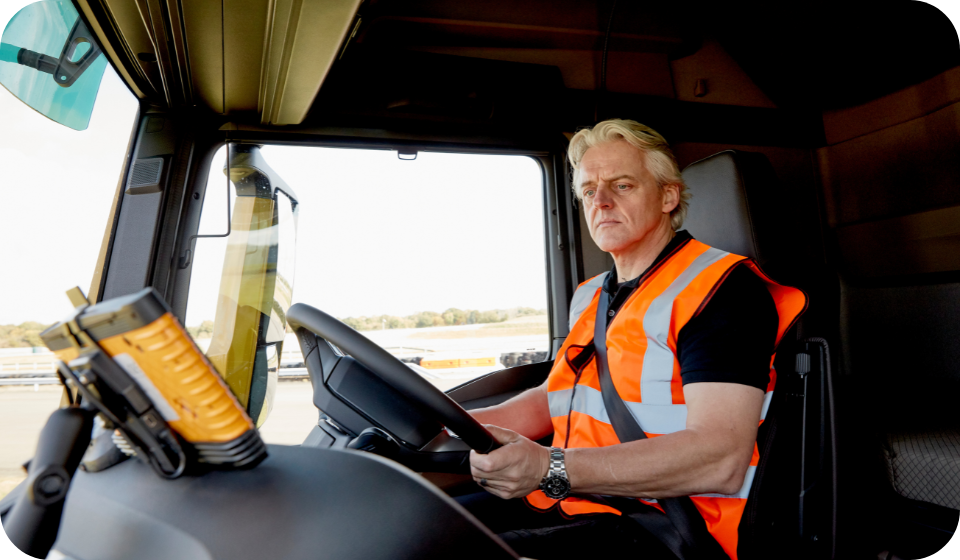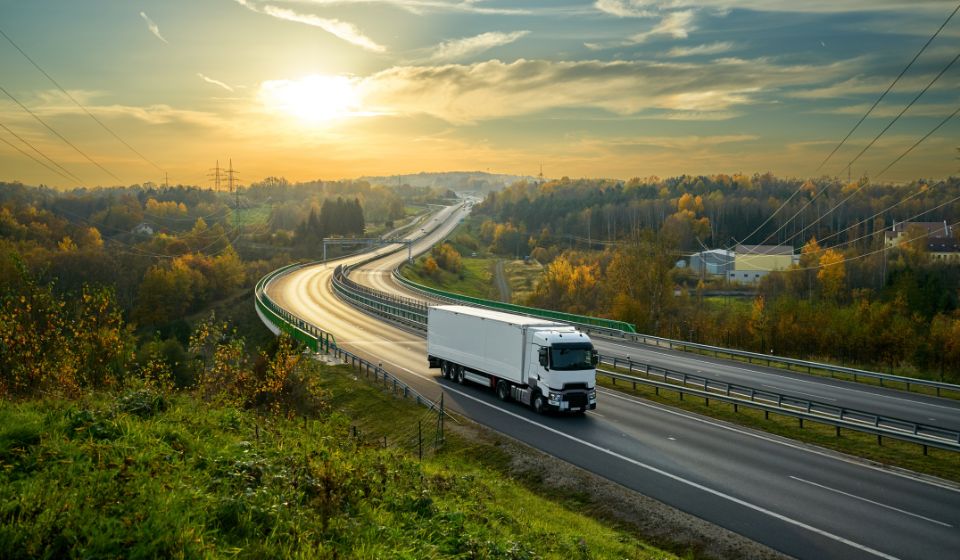World Class Fleet Safety, Security and Compliance – how can you level up?
If mid to last-mile logistics had a motto, it might be: “Expect the unexpected.”
From misplaced paperwork to rising fuel prices and last-minute delivery delays, supply chain management and logistics operations are full of challenges.
Customers expect fast, accurate deliveries with real-time updates, but many businesses still rely on manual processes and outdated systems that slow them down.
The good news? Logistics technology is transforming the industry, helping businesses improve delivery efficiency, reduce costs and boost customer satisfaction. Here are the top 10 logistics challenges and how digital solutions help companies stay ahead.

Challenge #1: Lack of Real-Time Visibility
Without real-time GPS tracking, deliveries become a guessing game. Operators struggle to locate vehicles, manage delays and track inefficiencies, leading to missed ETAs, wasted fuel and frustrated customers.
How technology helps:
GPS tracking and fleet telematics provide live location updates, route progress and delivery status. Logistics managers can reroute vehicles, optimise fleet operations and provide accurate ETAs for a better customer experience.
Challenge #2: Manual Processes Slowing Down Efficiency
Many businesses still use paper-based systems, spreadsheets and disconnected tools to manage their supply chain. These outdated processes cause delays, increase errors and raise operating costs.
How technology helps:
Digitalisation replaces manual workflows with automated dispatching, electronic proof-of-delivery (ePOD) and cloud-based transport management systems (TMS). These solutions reduce admin work, streamline order fulfilment and accelerate invoicing.
Challenge #3: Inefficient Route Planning
Poor route optimisation leads to longer delivery times, higher fuel consumption and increased transport costs. Without intelligent logistics software, drivers take inefficient routes, face unexpected traffic or miss delivery windows.
How technology helps:
Route optimisation software calculates the fastest, most fuel-efficient routes by factoring in traffic, delivery priorities and vehicle load capacity. This helps reduce costs, improve fuel efficiency and ensure on-time deliveries.
Challenge #4: Scaling Operations Efficiently
Growing delivery networks is challenging when manual processes and outdated systems create bottlenecks. Expanding fleets and increasing order volumes can overwhelm logistics teams without the right infrastructure.
How technology helps:
Route optimisation software calculates the fastest, most fuel-efficient routes by factoring in traffic, delivery priorities and vehicle load capacity. This helps reduce costs, improve fuel efficiency and ensure on-time deliveries.
Challenge #5: Meeting Customer Expectations
Customers today demand real-time fleet tracking, flexible delivery options and faster shipping times. Missed ETAs, poor communication or delayed updates can lead to negative reviews and lost business.
How technology helps:
Automated notifications, real-time tracking links and electronic proof-of-delivery (ePOD) keep customers informed. Smart analytics help anticipate potential delays, enabling proactive communication and improved customer service.
Challenge #6: Reducing Environmental Impact
The logistics industry is under pressure to reduce carbon emissions, lower fuel consumption and improve sustainability. Many businesses struggle to balance environmental goals with operational efficiency.
How technology helps:
Fuel optimisation tools, intelligent route planning and paperless workflows help lower emissions and improve fleet efficiency. Digital logistics solutions support sustainability efforts and ESG compliance without sacrificing productivity.
Challenge #7: Regulatory Compliance and Audit Readiness
Transport regulations and safety laws in Australia and New Zealand require strict compliance tracking. Manual record-keeping makes audits slow, increases the risk of errors and can lead to costly fines.
How technology helps:
Automated compliance tracking, digital pre-trip vehicle inspections and secure audit trails help businesses meet regulations with ease. Real-time alerts ensure transport fleets stay compliant and avoid penalties.
Challenge #8: Workforce Safety and Driver Behaviour
Speeding, harsh braking and distracted driving put drivers and fleets at risk. Without proper monitoring, enforcing safe driving behaviours is difficult.
How technology helps:
Driver monitoring systems track driving behaviour in real time, sending live alerts for risky driving. Dashcams and automated coaching tools help businesses reduce accidents and improve driver safety.
Challenge #9: Rising Operational Costs
Logistics businesses face rising fuel costs, increasing labour expenses and inefficiencies that impact their bottom line. Cutting costs without sacrificing delivery performance is a major challenge.
How technology helps:
Fleet telematics, automated workflows and route optimisation help reduce transport costs, cut fuel usage and improve fleet efficiency. Intelligent logistics software streamlines operations, saving businesses on logistics expenses.
Challenge #10: Staying Competitive in a Fast-Changing Market
With global logistics providers adopting advanced automation and predictive analytics, businesses that fail to modernise risk losing market share.
How technology helps:
Modular logistics platforms allow businesses to adopt automation and real-time analytics at their own pace. Data-driven reporting tools help companies stay competitive and optimise long-term strategy.
The Future of Mid- to Last-Mile Logistics
The logistics industry is rapidly evolving. Businesses that adopt smart transport technology solutions will reduce costs, improve safety, fleet efficiency and meet rising customer demands.
How Microlise Helps Overcome Challenges in the Logistics Industry
By embracing smart logistics technology, businesses can improve efficiency, reduce costs and enhance customer satisfaction. Microlise provides modular transport technology solutions that help transport operators with:
✅ Real-Time Fleet Visibility – track vehicles, deliveries and driver performance in a single platform.
✅ Operational Efficiency – automate workflows, optimise routes and reduce admin work.
✅ Enhanced Customer Satisfaction – deliver real-time updates and seamless customer communication.
✅ Sustainability & Fuel Efficiency – reduce carbon footprint and cut fuel consumption.
✅ Regulatory Compliance & Safety – protect drivers, meet transport laws and avoid penalties.





